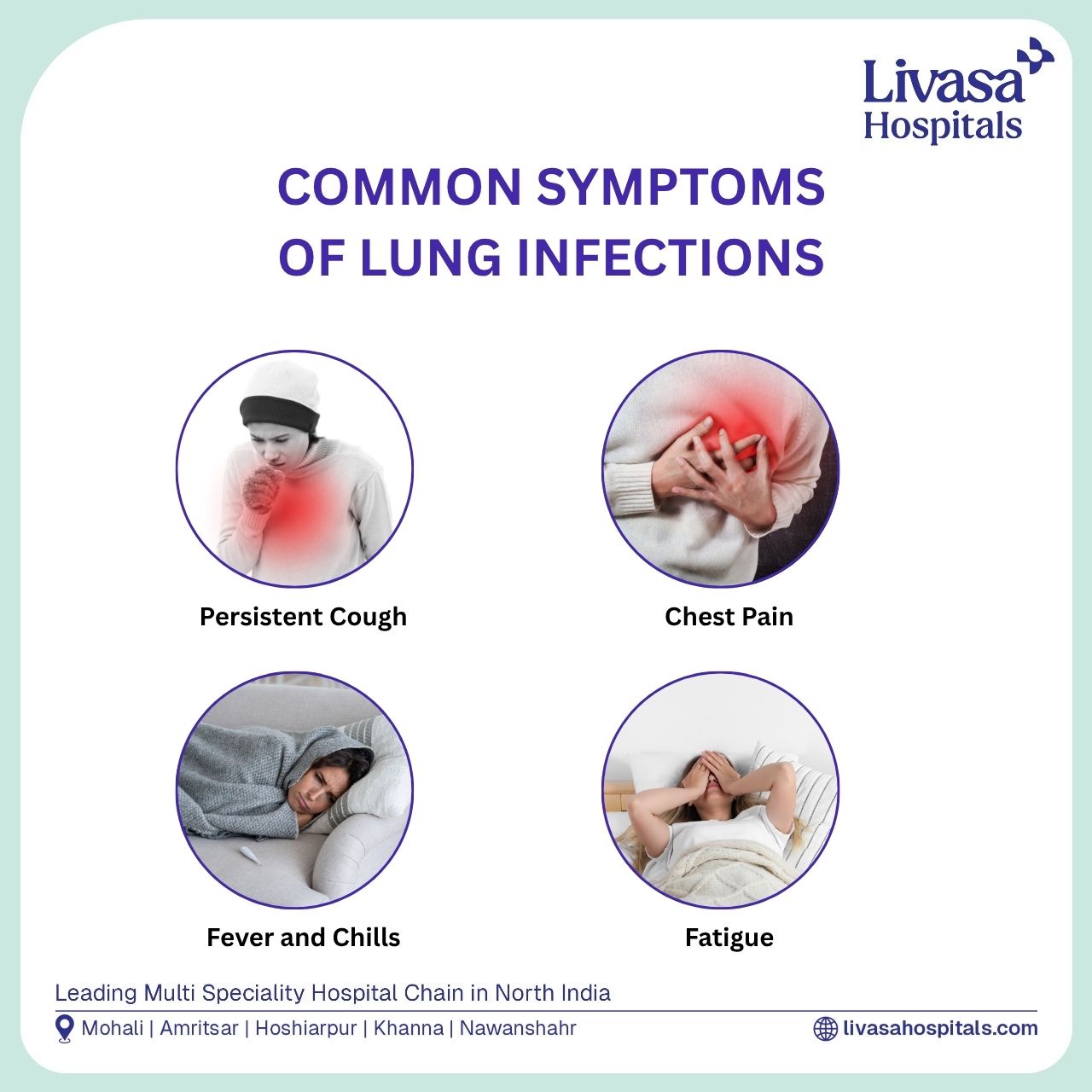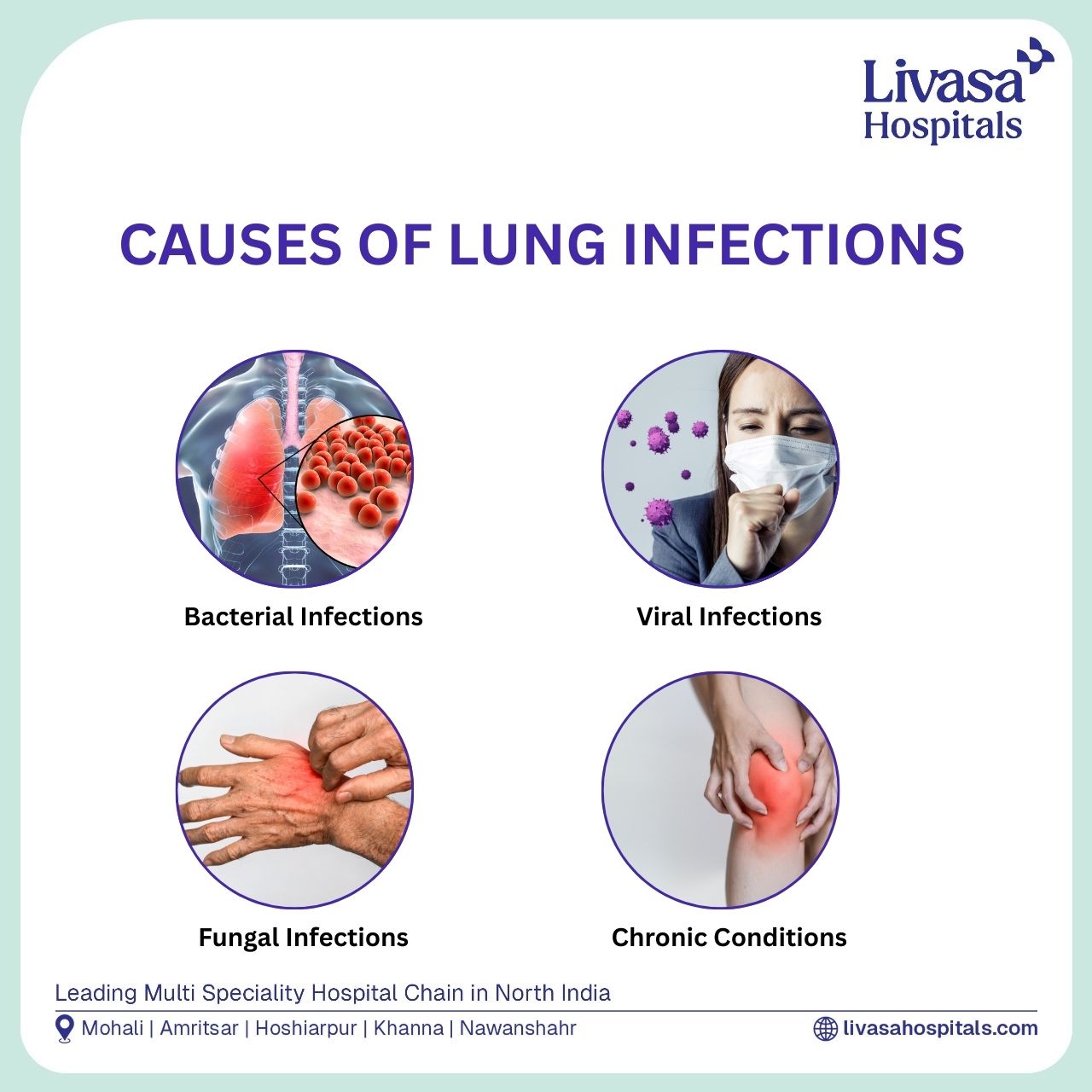Lung infections are a significant health concern worldwide, affecting people of all ages. These infections occur when harmful microorganisms, such as bacteria, viruses, or fungi, invade the lungs, leading to inflammation and other respiratory symptoms. Early identification and appropriate treatment are crucial to manage lung infections effectively and prevent complications.
Common Symptoms of Lung Infections

Lung infections can present with a wide range of symptoms that vary in intensity based on the type and severity of the infection. Key symptoms include:
- Persistent Cough A persistent cough is one of the most common signs of a lung infection. The cough may produce mucus, which can be clear, yellow, green, or even blood-streaked.
- Shortness of Breath Difficulty breathing or shortness of breath may occur due to inflammation and fluid buildup in the lungs.
- Chest Pain Pain or discomfort in the chest, especially when coughing or taking deep breaths, is a frequent symptom.
- Fever and Chills A high fever, chills, and sweating often accompany bacterial or viral lung infections as the body tries to fight off the pathogens.
- Fatigue Generalized weakness and fatigue are common due to the bodys response to infection.
- Wheezing and Crackling Sounds These symptoms may be noticeable during breathing and indicate airway inflammation or fluid in the lungs.
Causes of Lung Infections
- Bacterial Infections Bacteria such as Streptococcus pneumoniae or Haemophilus influenzae are leading causes of pneumonia, a severe lung infection.
- Viral Infections Viruses like influenza, respiratory syncytial virus (RSV), or coronaviruses can cause viral pneumonia or bronchitis, especially during flu seasons.
- Fungal Infections Fungal pathogens, such as Histoplasma or Aspergillus, may infect the lungs, particularly in individuals with weakened immune systems.
- Chronic Conditions People with chronic respiratory diseases, like asthma or chronic obstructive pulmonary disease (COPD), are more prone to lung infections.

Treatment Options Treatment for lung infections varies based on the underlying cause:
- Bacterial Infections
- Antibiotics: Prescribed to combat bacterial pathogens. It is crucial to complete the prescribed course even if symptoms improve.
- Viral Infections
- Antiviral Medications: Used in specific cases, such as severe influenza.
- Supportive Care: Includes rest, hydration, and over-the-counter medications for symptom relief.
- Fungal Infections
- Antifungal Medications: Essential for treating fungal lung infections, often requiring long-term therapy.
- Oxygen Therapy
- In severe cases, supplemental oxygen may be needed to improve breathing.
Preventing Lung Infections
- Vaccinations Vaccines against pneumonia, influenza, and COVID-19 can significantly reduce the risk of lung infections.
- Hygiene Practices Regular handwashing, wearing masks in crowded places, and avoiding close contact with sick individuals can prevent infection.
- Healthy Lifestyle Avoid smoking, maintain a balanced diet, exercise regularly, and stay hydrated to keep the lungs healthy.
- Manage Chronic Conditions Proper management of conditions like asthma or diabetes reduces susceptibility to lung infections.



